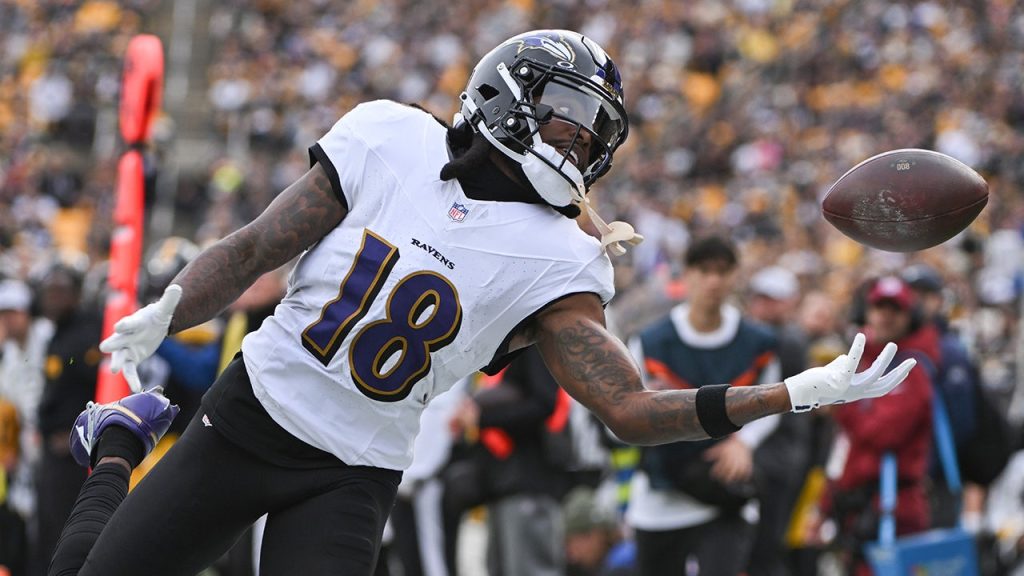The brief and tumultuous union between wide receiver Diontae Johnson and the Baltimore Ravens has come to an abrupt end, marked by underperformance, disciplinary issues, and ultimately, a waiver claim. Acquired in October from the Carolina Panthers with the intention of bolstering an already formidable offense, Johnson’s tenure in Baltimore proved to be a resounding disappointment, culminating in his release just weeks after his arrival. The failed experiment underscores the complexities of integrating new players mid-season and highlights the inherent risks involved in trade acquisitions.
Johnson’s time with the Ravens was marred by a lack of production on the field and off-field issues. In his debut game, he managed a meager single reception for six yards, which ironically marked his sole contribution to the team’s offensive statistics. His struggles to assimilate into the Ravens’ system were further compounded by a team suspension stemming from his refusal to play against the Philadelphia Eagles. This act of defiance, coupled with his subsequent absence from practice, effectively sealed his fate with the team. The Ravens’ decision to waive Johnson, particularly on the eve of a crucial divisional clash against the Pittsburgh Steelers, speaks volumes about their disillusionment with the receiver and their willingness to move on despite the potential impact on playoff seeding.
The trade, initially perceived as a low-risk, high-reward move for the Ravens, ultimately backfired. Baltimore surrendered only a fifth-round draft pick in exchange for Johnson, a seemingly modest price for a player who had led the Panthers in receiving yards earlier in the season. However, Johnson’s inability to translate his prior success to Baltimore’s offensive scheme raised questions about his fit within the team’s strategic framework. His limited playing time and lack of involvement, even after injuries to other receivers, further underscored his struggles to carve out a role in the Ravens’ offense.
From Johnson’s perspective, the trade to Baltimore initially appeared to be a fortuitous turn of events. Moving from the struggling Panthers to a Super Bowl contender offered the promise of a deeper playoff run and a chance to contribute to a winning team. However, his hopes of revitalizing his season were quickly dashed by his inability to make an impact on the field. The subsequent suspension and eventual release leave Johnson searching for a new team, a stark contrast to the optimistic outlook he held just weeks prior.
The Ravens’ decision to part ways with Johnson so swiftly highlights the high-stakes nature of professional football and the limited tolerance for underperformance, even for players acquired mid-season. The team’s willingness to cut ties with Johnson, despite the relatively low cost of acquisition, underscores their commitment to maintaining a cohesive and productive team environment. The failed experiment serves as a reminder that even seemingly promising trades can fall short of expectations, and the integration of new players is not always a seamless process.
In conclusion, Diontae Johnson’s brief and ill-fated stint with the Baltimore Ravens serves as a cautionary tale about the challenges of mid-season acquisitions and the importance of team chemistry. His inability to contribute on the field, coupled with disciplinary issues, ultimately led to his release, leaving both the player and the team to grapple with the fallout of a failed experiment. While the Ravens move forward with their playoff aspirations, Johnson faces the uncertainty of finding a new team and rebuilding his career after a disappointing detour in Baltimore. The episode underscores the volatile nature of the NFL and the constant pressure to perform at the highest level.

